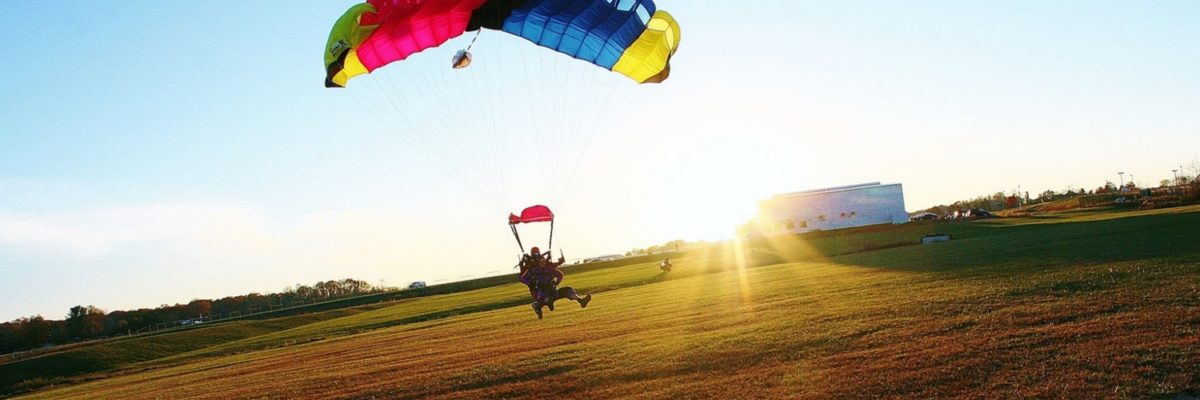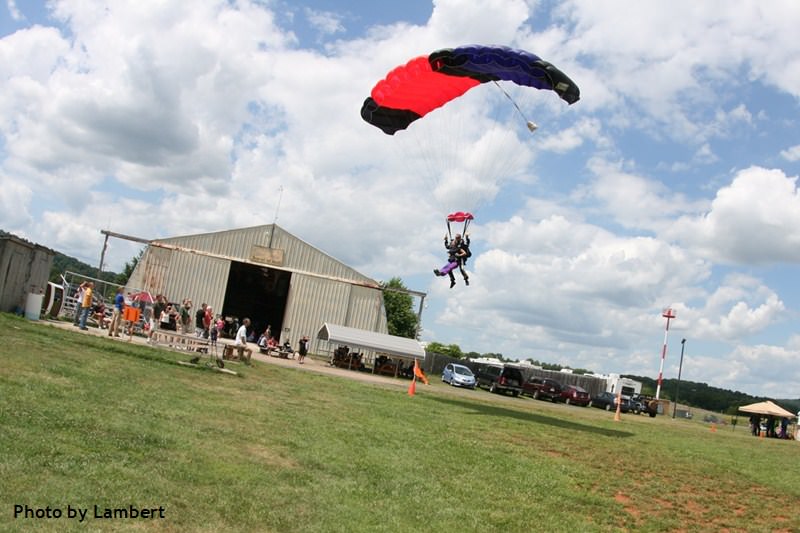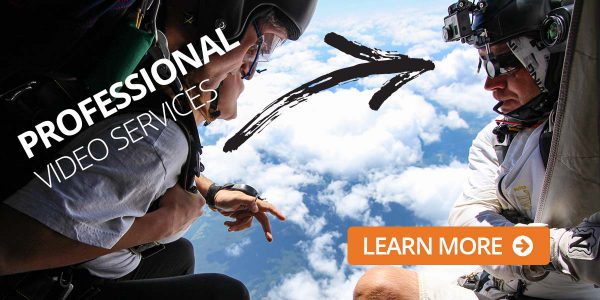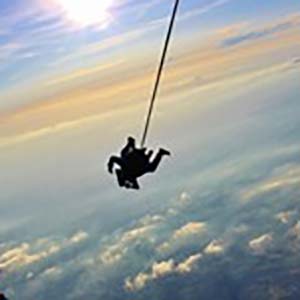
What If A Skydiving Parachute Malfunctions?
Monday, October 31, 2022
- Skydive Orange
- 10/31/22
- 0
- Skydiving Information
Here’s the cold hard truth: parachute malfunctions do occur. But rarely will a malfunction result in serious injury or death. So what if a parachute malfunctions? Well, that depends! Skydivers are trained to deal with a variety of malfunctions before they ever get in the sky for the very first time. Here’s a rundown of all things malfunction – including how often parachutes fail, because we know that’s top of mind, too.
Pieces and Parts: Skydiving Rig Anatomy
People have been working since the dawn of skydiving to develop equipment that makes the sport safer. Because of this, the skydiving rig has several features designed to ensure your freefall comes to an end safely. Let’s take a look at some of the main ones.

Main Parachute
This is the primary parachute and 99.9% of the time, it works! If it does malfunction, it can be “cut away” from the rest of the rig using a three-ring system. The main parachute can be packed by anyone proficient in the process, including the jumper.
Reserve Parachute
This is the secondary, or backup, parachute that would be used in the event the main parachute must be cutaway. The reserve is attached to the skydiving rig by risers connected to the rig’s harness. Unlike the main canopy, the reserve cannot be removed during a skydive.
The reserve parachute must be packed by a Federal Aviation Administration (FAA) certified parachute rigger. Riggers are required to complete rigorous training, including a whole lot of packing practice, and demonstrate their skills before being allowed to pack a reserve or maintain any gear. The reserve parachute must be repacked every 180 days, regardless of whether or not it has been used.
Automatic Activation Device (AAD)
This is a device that detects altitude and automatically deploys the reserve parachute if it exceeds a certain speed at a set altitude. All rigs at Skydive Orange (personal rigs as well as tandem and student rigs) are required to be equipped with this piece of technology.
How Can a Parachute Malfunction?
Now that we know a bit about what makes up a skydiving rig, we can talk a little more about parachute malfunctions and how to address them should they arise.
Before we get into the nitty-gritty, though, we do want to note that the chance of a parachute failing is very slim. Most skydiving accidents ending in injury or death are a result of human error – not parachute malfunction. We want you to understand that parachute malfunctions do occur, and to encourage you not to fret. Most of them can be resolved!
That being said, there are two main categories of malfunctions:
- Partial Malfunctions: In a partial parachute malfunction, the main parachute comes out of the container but something goes wrong (like a line over, horseshoe, bag lock, etc.). Partial malfunctions can be major or minor. Some can be corrected (somewhat easily) by the skydiver, while others require additional action from the jumper, such as deploying the reserve.
- Total Malfunctions: A total malfunction occurs when no part of the main canopy deploys. That doesn’t mean that *no* parachutes can deploy (remember – we’ve still got the reserve, this is just the main!).
What Do You Do If A Parachute Malfunctions?
What you do if a parachute malfunctions depends on if you’re a solo jumper or a tandem. Solo and licensed skydivers are taught – and regularly drill – emergency procedures to be sure they can deal with the different types of malfunctions that occur.
Solo jumpers are trained on how to identify and address specific types of malfunctions. One way they can assess whether a canopy is “good,” or safe to fly, is to complete a thorough controllability check after deployment. This will help the jumper determine if the canopy is:
- Square: rectangular
- Stable: flying straight and smoothly (no spinning)
- Steerable: maneuverable using the toggles, or lines, that turn and slow it
If these three criteria are not met, the jumper initiates emergency procedures.
If you are a tandem jumper, you will not likely play an active role in dealing with a parachute malfunction. Try to keep calm, trust your instructor and, most importantly, listen to any direction you’re given.
If the skydiver is unable to deploy the main parachute or becomes unconscious at any point during the skydive, the AAD comes into play. It will automatically deploy the reserve parachute for you, allowing you to still land safely.
In the media, you’ll sometimes hear that a person is injured or killed from a skydive because their “chute didn’t open.” When an AAD is in the mix, you’re more likely to see the headline “skydiver chute doesn’t open and lives.” The AAD is a small but mighty life-saving device.
How Often Do Parachutes Fail?
The United States Parachute Association (USPA), compiles skydiving statistics that allow us to monitor just how safe skydiving is. Approximately 1 per 1,000 jumps will experience some type of malfunction – but remember, malfunctions can fit into the “minor” category too. Not every malfunction requires the use of emergency procedures or deployment of the reserve.
In 2021, the odds of a parachute not opening was about 1 out of 721, as this many skydivers reported using their reserve parachute. It is important to note that this is the total number of all skydives – not just tandems.
To put this into perspective, last year there were approximately 3.57 million skydives reported in the US, 10 of which resulted in a fatality. This equates to .28 fatalities per 100,000 jumps. Note that 2 of these 10 fatalities were parachute related, and both occurred from human error.
Our instructors are highly experienced and trained in dealing with parachute malfunctions. In the unlikely event that something were to happen, they will act fast and do their very best to keep you and them safe. Contact us if you have any questions, or go ahead and schedule your skydive! Blue skies!
The largest tandem skydiving center near Northern Virginia, Washington D.C. and Maryland.
Copyright © 2025, Skydive Orange, All Rights Reserved.
DropZone Web Design & Marketing by Beyond Marketing, LLC


